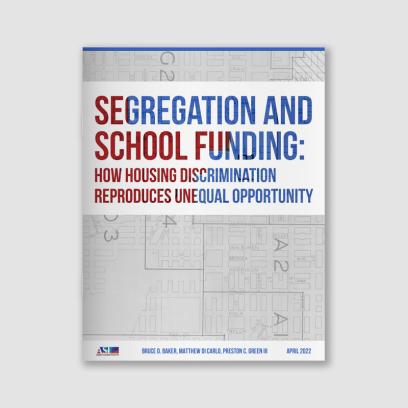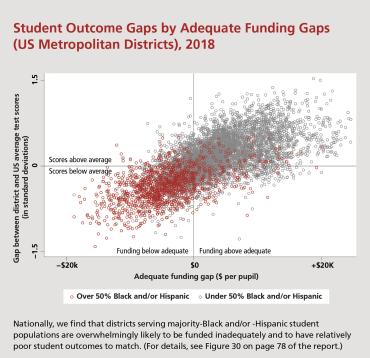A new report from the Albert Shanker Institute, Segregation and School Funding: How Housing Discrimination Reproduces Unequal Opportunity, lays out a clear path from redlining (which mandated housing segregation) to the creation of high-poverty Black and Hispanic communities where schools are underfunded—and students need educational enrichment. Here, we share a brief excerpt; for the full report, see shankerinstitute.org/segfunding.
–EDITORS
It is difficult to overstate the importance of segregation for race- and ethnicity-based school funding disparities in the United States. In many respects, unequal educational opportunity depends existentially on segregation.
Throughout most of the 20th century, white people decided where people of other races were allowed to live. An evolving array of strategies, from municipal laws to private contracts to federal aid programs, established and reinforced the systematic separation of households by race and ethnicity in the nation’s burgeoning metropolitan areas. And they have been incredibly effective.
The effects of this segregation, past and present, are almost difficult to get one’s head around; residence has dramatic and wide-ranging effects, direct and indirect, on virtually all important social and economic outcomes, including health, earnings, family status, social networks, and many others. School finance is but one of these areas, but it’s an important one.
In the United States, school districts rely heavily on local property tax revenue, which means where one lives—particularly in which district—in no small part determines how well one’s neighborhood’s schools are funded. The mutually dependent relationship between economic and racial/ethnic segregation simultaneously depresses revenue and increases costs in racially isolated districts (because districts serving larger shares of high-needs students must invest more to achieve the same outcomes). This creates (and sustains) unequal educational opportunity—i.e., large gaps in the adequacy of school funding between students of different races and ethnicities living in the same metro area.
Across all US metropolitan districts, 89 percent of districts with Black and/or Hispanic student percentages at least 10 points higher than their metro areas (994 out of 1,116) receive less adequate funding than does their metro area overall. Nationally, a 10 percentage point increase in a district’s Black and/or Hispanic student population above its metro area’s overall Black and/or Hispanic percentage is associated with a decrease in relative funding adequacy of over $1,500 per pupil.
It is, perhaps, more palatable to view unequal educational opportunity as a side effect of income and wealth segregation than it is to see it as the end result of racism and discrimination. Yet the reality is that economic segregation, while interdependent with racial/ethnic segregation today, has its roots in generations of institutional policies and practices to keep people separate based solely on their race or ethnicity. Racism built the machine, even if economic inequality helps keep it running now.
Breaking the cycle of segregation and K–12 funding inequity will require deliberate, large-scale interventions on both the housing and school finance sides of the equation. But the first steps are to acknowledge that racial/ethnic segregation and unequal educational opportunity are inextricably connected and to understand the history of how that came to be.


